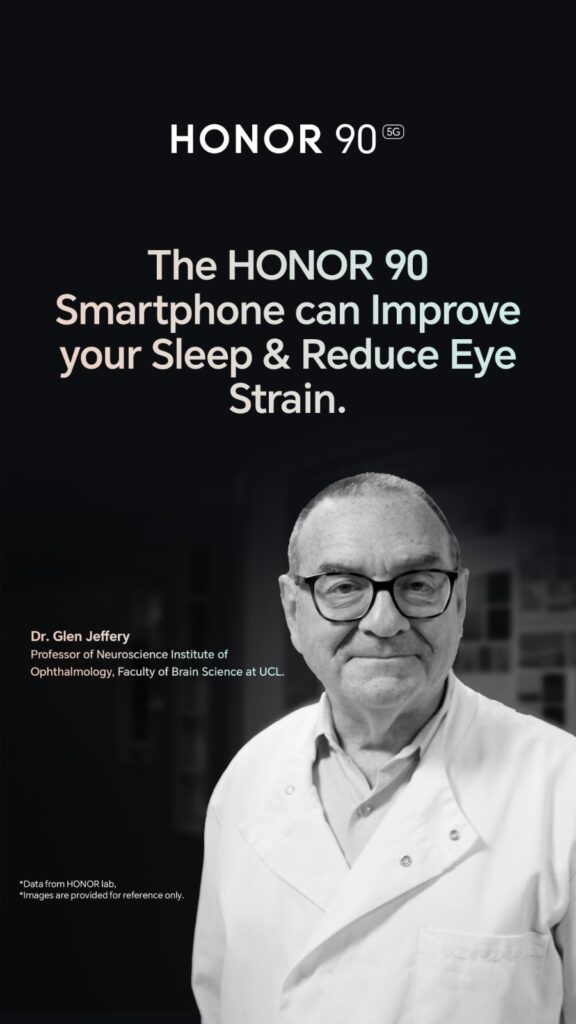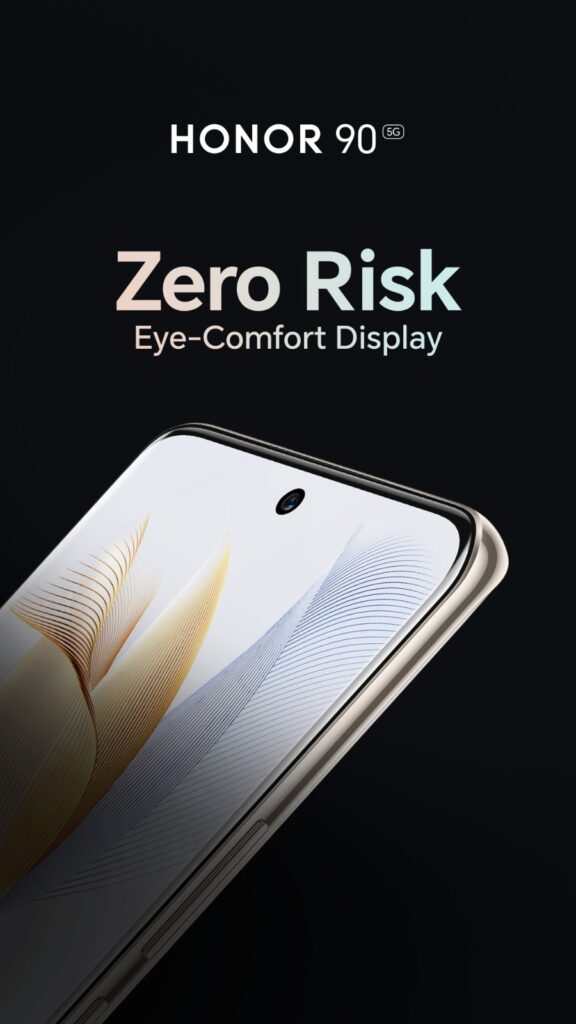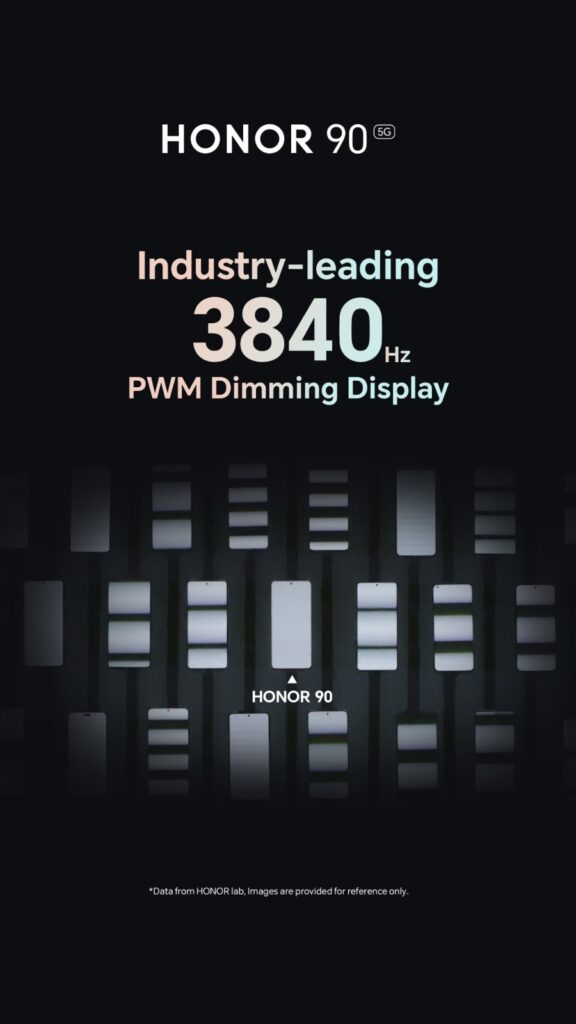Rational and spectral performance of the HONOR 90 and HONOR Magic5 Pro

Riyadh: Gulf Tech News
Blue light is a strong visual stimulus and increases our awareness by enhancing production of natural steroids like cortisol. For this reason, it is a key part of modern domestic and commercial lighting and also forms the backdrop to many modern screen technologies. This strong blue light component makes images look clear and sharp but can also cause visual stress. Many LEDs that appear white actually have a strong blue element, although we see the light that they produce as white. This is particularly true of cold white lights that can appear harsh. However, excess blue light can be uncomfortable, particularly with long exposures, and some people find that this is associated with eye strain. Hence, there is a drive to reduce the blue light content of many devices.
Excess blue light can induce other problems, as it can influence blood pressure and heart rate in humans. It is absorbed by porphyrin and results in the production of oxygen singlets that can drive inflammation and reduce mitochondrial function that undermines general metabolism. Although we are not aware of it, natural sunlight tends to have less blue late in the day around sunset, and there is a reason for this, as exposure to blue light late in the day will make it harder to get to sleep and reduce the quality of the sleep that we eventually get. This is because blue light blocks the production of melatonin which is a hormone that induces sleep and naturally peaks late in the day.

Consequently, regulating blue light exposure late in the day is important for the quality of life. However, digital devices generally do not change the amount of blue light that they produce based on the time of day. Two of HONOR’s latest smartphone devices, the HONOR Magic5 Pro and HONOR 90, do exactly this. They match the time of day to the level of blue light that the screen produces. This technology will become important in the future with increasing screen time and late working.
Screens are made of a mixture of blue, green and red light that our eye mixes to produce the appearance of white light or to make other colours. The graph shows the normal balance of these colours in blue on most phones and also on the recently launched HONOR Magic5 Pro smartphone in normal mode. But this phone also has an eye comfort and sleep function that reduces the blue late in the day by almost 40% in a spectral shift. So, in this mode the device when used late in the day will contribute to better sleep patterns and may also reduce eye strain.
Eye comfort and sleep function mode – Spectral output
Output reduction; red 1.5%, green 9.9%, blue 39.3%. The Y axis is in relative arbitrary units zeroed from baseline.
Spectral output of the HONOR Magic5 Pro
Methodology for our analysis of the phone’s screen characteristics: The phone was fitted with an O2 sim card, and the standard operating system and associated applications were loaded using Wi-Fi and the 5G connection. A custom target with red, green, blue, and white areas at maximum chromatic levels was loaded to the device as a JPEG file and displayed using the photo display application.
The device was mounted on a board attached to a standard laboratory retort stand. Power was supplied though a USB C charger (1). All tests were carried out with the device plugged into the mains power supply.

The probe optical fibre of a spectrometer with a diffuser on the input, (Ocean Optics, USB2000+UV+VIS+ED), was placed roughly in the centre of the white area of the target and connected to a PC running OceanView™ Version: 2.0.7. The fibre was secured to the retort stand with standard clamps. With the colour and luminance variable left at the “default” values spectral outputs were recorded through the OceanView software, and then transferred to MS Excel.
Readings were taken during the mid-afternoon for the “Eye save” mode, with the facility toggled on and off. For the “Eye Comfort and Sleep” application, readings were taken at approximately 30-minute intervals over a 24 hour period, with the default 22:00 to 07:00 time settings used. In both cases the recording range was from the ultraviolet to near infrared, although the value range was later cropped to the human visual range. Whilst recording the Comfort and sleep mode, the telephone display had to be activated for each reading (2). A short time, (>=30 seconds), was allowed for the display to stabilise. This was based on measurements taken during initial experimental setup.
Summary of spectral components over time. Red remains constant while blue is significantly reduced and there is also a reduction in green
Spectrometer values were averaged at the peak values to remove noise, and these averaged values used in the calculations.
Concluding thoughts
The impact of blue light on the body is largely unappreciated and will become a significant problem in human health. It can disrupt sleep and have other long-term effects that we should try and avoid. Long term sleep disruption is associated with a range of ailments that HONOR’s novel technology may be able to help side-step. HONOR’s development of its circadian night display and dynamic dimming features is an important move in this direction




